
Original Link: https://www.anandtech.com/show/404
AMD Athlon Buyer's Guide - Part 1: Motherboards
by Anand Lal Shimpi on November 8, 1999 7:35 PM EST- Posted in
- Guides
The Athlon has been "out" for over three months now, but only recently has it become available to those who have been dreaming of it for the past year. Online merchants and vendors are finally carrying the chips and they aren’t just carrying the 500MHz and 550MHz parts but all of the released chips, including the newly released 700MHz monsters. For the first time since before the K5, AMD has been able to deliver on the market’s demand for their chip, but, as we’ve come to learn the hard way with this amazing processor, there is much more to a system than just having a fast CPU.
You need to be able to pick the right memory, the best motherboard, the fastest video card, and the most reliable power supply. And when dealing with the Athlon, picking the best of the best can be even more difficult than usual, simply because of the obstacles that AMD has faced with getting this CPU into the hands of you, the consumer. In the next few articles we will be focusing on choosing the best components with which you can build your supreme Athlon system. This section of the guide will concentrate on choosing the perfect Athlon motherboard from among the boards that are currently available, with an eye on those that are soon to be out.
The first time we took a look at Athlon motherboards was in the first part our Next Generation Motherboard Platform article. We spent most of the time comparing the initial motherboard offerings and commented on what to look for in an Athlon motherboard. The holiday buying season is quickly approaching and for many individuals, it is time to make that motherboard/CPU purchase, so how have the options grown to fit what we discussed an ideal Athlon motherboard would feature?
Unfortunately, the options have not grown much at all. The biggest change has been in the quiet release of the ASUS K7M, the Athlon motherboard that was thought to be the savior of the Athlon platform. Other changes have occurred as well: more Athlon motherboards have been announced (although most of them are coming from the same companies that released the first boards), BIOS revisions are being made, and bugs are being sorted out.
In spite of all of this, it is too often that a potential buyer is turned off by the number of complaints users have been expressing towards the Athlon in general because of their personal experiences. The Athlon is a very delicate platform, much like the Super7 platform was when it was AMD’s reigning flagship. It can offer a tremendous amount of performance at a fairly reasonable cost if and only if the power is harnessed by the proper components, more specifically, a well made motherboard.
The Boards
FIC SD11

Gigabyte 7IX
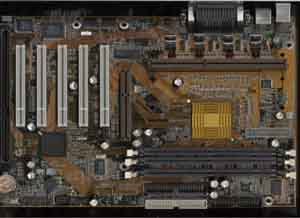
MSI 6167
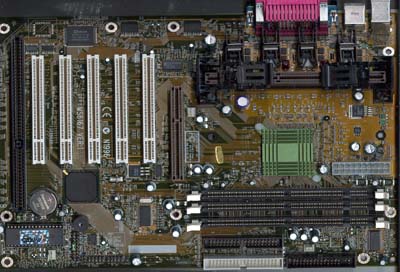
ASUS K7M
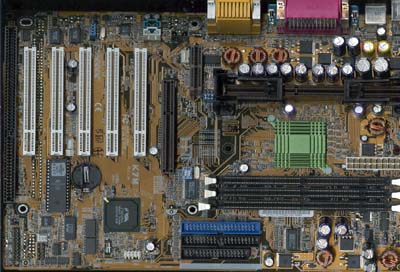
A Well Made Board
AMD has already proven to the market that with enough time and effort, a reliable Athlon motherboard can be produced. Case in point would be AMD’s Fester reference motherboard that the company supplied to all reviewers as well as some OEMs in order for them to evaluate the Athlon processor. The Fester may not have had all of the bells and whistles of the BX motherboards we have grown to be used to for the past year and a half, but it was stable, and it seems like with the first batch of Athlon motherboards, a stable board was just too much to ask.
The problem with all motherboards in general is that they need to get the job done (like the Fester) while keeping costs low enough to maintain a decent profit margin. The amount of profit a company can make on a single motherboard is not significant. Even if all of the overclockers in the world purchased a single motherboard the resulting profit would not be great enough to fuel an entire company. Large OEM deals are what keep motherboard manufacturers alive and the lack thereof puts many other manufacturers to an early death.
In order to succeed in this market, motherboard manufacturers tend to skimp on certain parts of the motherboard during the manufacturing process. Generally this does not effect the end user too greatly, but when you are dealing with a platform as sensitive as the Athlon, these areas that were skimped on become very noticeable and often times very annoying.
One of the major problems with the current crop of Athlon motherboards is the fact that they are having a difficult time supplying enough current to the AGP slot. The Athlon CPU itself consumes quite a bit of power, but once you add a current drawing AGP device such as a TNT2 Ultra, some motherboards have a difficulty supplying the necessary amount of current to the AGP device. When this happens the system simply crashes, and the user is left with a feeling of frustration towards their newly constructed system.
This problem could also be related to the power supply in your system, but we’ll be eliminating that possibility by using a unit known to be able to supply enough current to a loaded Athlon system. For a list of all power supplies capable of driving an Athlon system take a look at AMD’s recommended configuration page at: http://www1.amd.com/athlon/config
We tested to see which motherboards could deliver enough current to the AGP slot was by using a power supply (we actually used three different power supplies and tested to see which one worked best on the particular motherboard) that could normally run a TNT2 Ultra on an AMD Fester motherboard at 170/200MHz (core/mem) and a Diamond Viper V770 that could normally hit that 170/200MHz mark. We then increased the core clock speed of the TNT2 in 5MHz increments until it reached the 170MHz maximum of the card and recorded the maximum core frequency the system remained stable at. Stability was judged by the ability of the system to run through endurance test runs of Quake 3, Expendable, and Unreal Tournament.
It turned out that the ability of the motherboards to deliver enough current to the AGP slot was not as bad as we originally assumed from all of the horror stories around the web. All four of the boards were able to hit 170/200 without any problems at all, pointing at another component of the system as the culprit for possible instability. We will be discussing exactly what that component is in an upcoming part of this guide.
As we alluded to earlier, the Athlon draws a significant amount of current and thus puts a great amount of stress on the motherboard’s ability to supply current to the CPU. The successfulness of a motherboard in this arena is dependent entirely on the number, quality and capacitance rating of capacitors around the Slot-A connector, the physical design of the motherboard, and the quality of the manufacturing process.
At the same time, motherboard manufacturers receive specifications and sample parts that help to inform them on how much current the Athlon CPU will draw at the various clock speeds. They use this information when they put together the supported CPUs list. So as long as a motherboard officially supports the speed of Athlon that you will be using then you should be fine, right?
The manufacturers guarantee minimum operation and support for the processors while operating within their original specifications which translates into no guarantees for overclocking. With more and more Athlons modified for overclocking purposes becoming commonplace, and voltage tweaking becoming a reality, the current demands on the motherboards increase. For tweakers looking to get the most out of their setups, a poorly designed motherboard could limit your success here as well.
In order to test this facet of motherboard quality we took the same setup from before, using the same power supplies and fired up the machine. We used a 600MHz Athlon that was known to work at 750MHz at 1.80v on the Fester board and tried it at that speed on all of the motherboards to see whether or not it would operate in a stable manner. In order to make sure that the L2 cache was not the limiting factor, the L2 cache was clocked at 1/3 of the CPU’s clock frequency and not the normal half, thus keeping it below the 300MHz rated frequency.
We ran two separate tests, a Quick Stability Test and an Endurance Test. The Quick Stability Test was simply a measure of whether or not the system would successfully boot into Windows. The Endurance Test was a looped run of BAPCo's SYSMark 98.
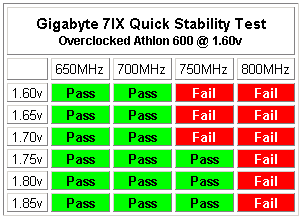
The Gigabyte 7IX very closely resembles AMD's own Fester board in its layout and design, the only visual differences being the number of expansion slots and the quantity and rating of the capacitors on the board. Needless to say, the board performed very similar to the reference Fester board in our tests.
The system was unable to hit 800MHz at any core voltage and was unable to reach 750MHz with a core voltage lower than 1.75v.
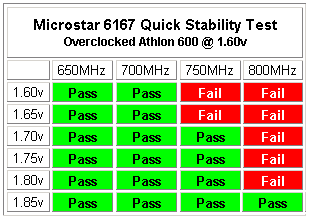
The Microstar 6167 was one of the first Athlon motherboards to be released and upon its release was said to be a board that very closely resembled the 7IX from Gigabyte, which in turn closely resembles the Fester, notice a pattern here? The 6167 is slightly more stable in the Quick Stability Tests and managed to boot into Windows at 800MHz (1.85v) as well as at 750MHz with a 1.70v core.
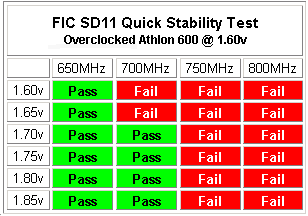
The SD11 came in last place in all of our Stability Tests. While the board itself is capable of running an Athlon 700, it failed to run our overclocked CPU at any core voltage less than 1.70v.
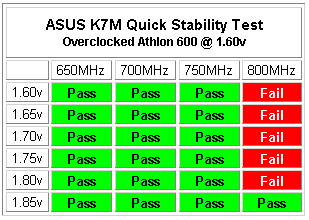
This is the board we've all been waiting for but how stable is it? In contrast to the SD11, the K7M came in first place in all of our stability tests. While it still wasn't capable of running the Athlon at 800 at a voltage below 1.85v, it managed to run our 600MHz Athlon at 750MHz at its default voltage of 1.60v.
The Endurance Tests involved testing to see whether or not the motherboard could complete a set of looped runs of BAPCo's SYSMark 98 test suite. The test suite runs through and tests performance in 14 applications.
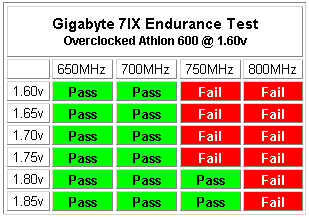
The Endurance Tests level the playing field and place the Gigabyte 7IX and MSI 6167 on an equal platform.
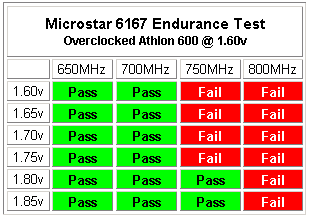
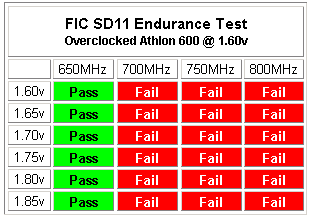
The FIC performs even worse here, completely unable to hit the 700MHz mark reliably enough for normal operation.
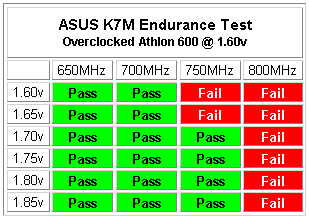
While it can't hit 800MHz in the Endurance Test, the K7M is still superior to the rest of the competitors in terms of its ability to operate under very stressing conditions. ASUS' high quality manufacturing and stability are more than evident with the K7M and are represented by its stellar performance in our tests. This isn't to discount the fact that both the Gigabyte and MSI boards performed very respectably too.
Other Overclocking Options
Other than physically modifying the processor card itself (or purchasing a pre-modified CPU) the only other option for overclocking your Athlon lies in the hands of the motherboard -- FSB frequency control. Out of the four motherboards we looked at (not including the Fester), only two offered FSB frequency adjustments, the ASUS K7M and the FIC SD11.
The default FSB for the Athlon is 100MHz (the "200MHz EV6 Bus" comes from the ability of the bus to transfer on both the rising and falling edges of the clock, thus effectively doubling the transfer rate) but you must keep in mind that overclocking the FSB on Athlon motherboards is much more of a sensitive process than on the BX boards we are used to.
The EV6 bus protocol is apparently not as overclocking friendly as Intel’s GTL+, at least at this point in time of the Athlon’s evolution, therefore the FSB overclocking options are very limited. Any frequencies above 110MHz should just be considered to be completely out of the question, meaning that the 124/133MHz of FIC’s SD11 are worthless because they won’t even boot. This limitation is obviously temporary as the EV6 bus is scalable up to 200MHz (200MHz x 2 = 400MHz), but for now don’t expect to be able to use the FSB as a real overclocking option.
Below the 115MHz mark, the options become a bit more reasonable. The general consensus is that 110MHz is the limit of the ASUS K7M, the only motherboard of the four we’re looking at that supports overclocked frequencies less than the 124/133MHz of the SD11. As with all forms of overclocking, your mileage will vary, while some users have been able to hit 110MHz others are limited to around 103 or 105MHz, on the K7M in particular.
From our in lab experience with the Athlon and FSB overclocking, the performance gain is not worth the potential risk of overclocking the FSB on Athlon motherboards, especially with the current quality of Athlon motherboards and the electrically demanding nature of the CPU. You’ll probably want to look to some third party overclocking options for the Athlon, some of which we will be covering in Part 2 of our coverage.
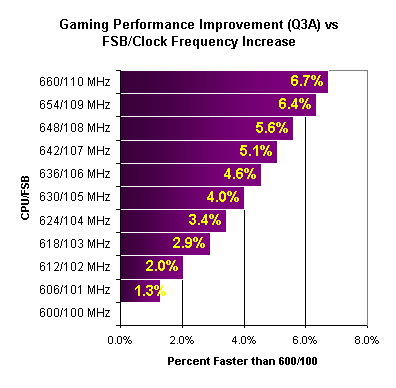
A 10% increase in the FSB frequency and a resulting 10% increase in the clock speed of the Athlon yields a little less than a 7% performance gain in our Quake 3 tests using a GeForce 256. The performance improvement is definitely there but as we mentioned before, the stability of your system at the 110MHz FSB may be undesirable and thus force you to select a lower FSB setting. Not to mention the possible ramifications of running the FSB 10% out of spec. The EV6 bus isn't as welcome to overclocking as the GTL+.
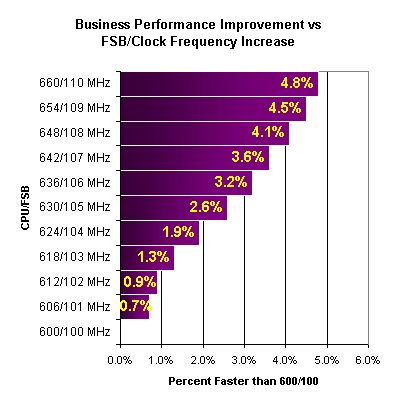
In business applications and overall system performance, the performance improvement to clock speed increase ratio is smaller than what we noticed in the gaming tests. The 10% increase in FSB and CPU clock speed results in just under a 5% overall performance improvement with diminishing returns as the FSB frequency drops below 110MHz.
Summary
Out of the four Athlon motherboards that we took a look at in this part of our Athlon Buyer's Guide, the ASUS K7M is clearly the most robust and solid solution available. This is not to say that it is the best motherboard we have ever seen, because it is far from it, but it is without a doubt the best Athlon motherboard we have had the pleasure of testing in lab.
Unfortunately ASUS has more than one reason to not want to push for the sale of the board. They are on fairly friendly terms with Intel and their products based on Intel chipsets do sell very nicely as they are of a very high quality, so why would they possibly want to ruin that relationship in order to sell an Athlon motherboard that wouldn't nearly generate as much revenue as they could earn from their Intel BX or 820 based motherboards? It seems like ASUS isn't willing to sacrifice sales figures in order to supply the killer motherboard we have been able to test. While ASUS may not manufacture the K7M under their name, it wouldn't be surprising to see it kept alive under an OEM name for at least a little while longer. So what do you do if you can't get your hands on the K7M?
First of all, realize that the K7M, albeit the best Athlon motherboard available today, doesn't offer all that much over the competition. The FSB tweaking options can help improve the performance of an already high performing CPU by up to 7%, in the grand scheme of things, that's not a tremendous margin. At the same time, the stability of the K7M in normal scenarios is on par with that of the Gigabyte & MSI boards that we took a look at so long as the system is configured according to AMD's specification in terms of meeting power supply requirements, etc... So if a vendor is selling a K7M for considerably more than a Gigabyte or MSI board, don't hesitate to save a few bucks and go for one of the latter two.
That brings us to the Gigabyte & MSI boards themselves. With a few bug fixes provided through BIOS updates, the Gigabyte 7IX is finally beginning to resemble a board that is deserving of the Gigabyte brand name. The 7IX still has its quirks and even refuses to work in some configurations based on AMD recommended power supplies (we will be addressing this issue in particular in an upcoming addition to this guide) but overall it isn't a poorly designed motherboard. The MSI 6167 is slightly superior to the 7IX and it receives AnandTech's pick for runner up to the best overall Athlon motherboard out of the four (the K7M takes the first place spot). Unfortunately both of these companies are having difficulties getting the word out about their motherboards without worrying about the possible ramifications of doing so. Don't expect to see a 6167 or a 7IX on every street corner, but with a bit of searching you may be able to get your hands on one of the two.
The FIC SD11 is by far the most widely available Athlon motherboard on the market, simply because FIC is not afraid of Intel. They have had a history of defying Intel by producing and making widely available motherboards based on VIA and other alternative chipsets. You had better believe that they jumped on the Athlon bandwagon as soon as they could. Unfortunately FIC's quality of design is not the best in the business, in fact it can be said that the SD11, while being the most widely available Athlon board, is one of the worst if not the worst Athlon motherboard on the market. If configured properly in a system the board will work with an Athlon processor, however in the most stressful of conditions the motherboard fails miserably. FIC has never been known for producing high quality motherboards, and the SD11 is the latest addition to that reputation. You'd be better off considering any one of the three other options.
In part 2 of this guide we will discuss the overclocking options offered outside of the motherboard, so stay tuned for that update.







